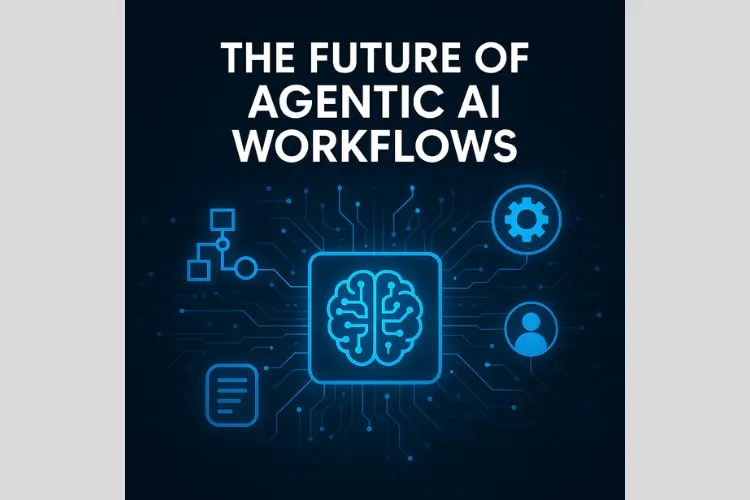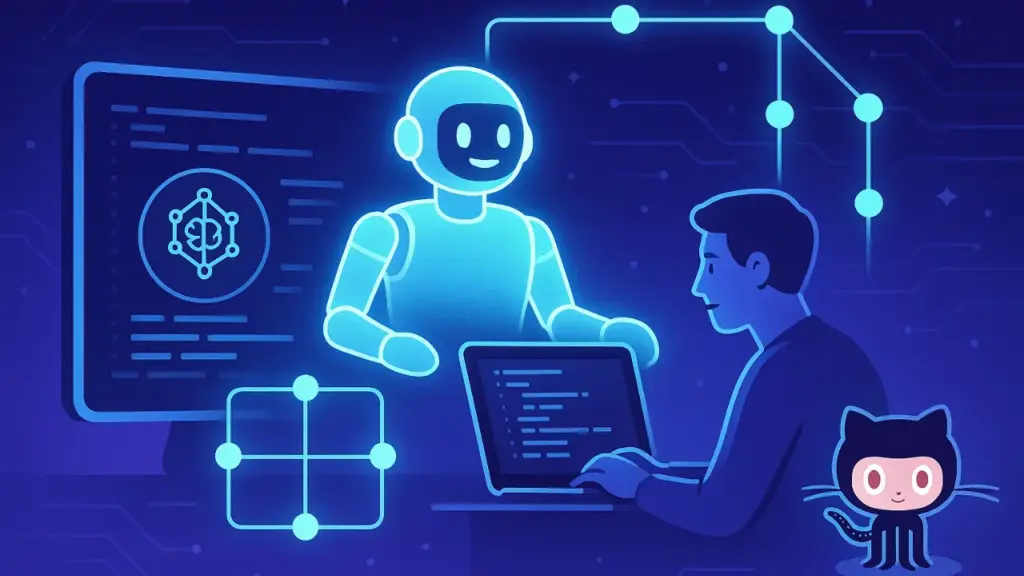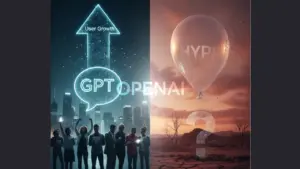Introduction
Artificial intelligence is transforming how developers write code, build software, and ship products. Tools like GitHub Copilot have already changed the game with intelligent code suggestions. But even Copilot had limits—it was reactive, confined to the files in your editor, and disconnected from the wider development ecosystem.
Now, with the introduction of the Model Context Protocol (MCP) and Agent Mode, Copilot enters a new era. It evolves from a helpful suggestion engine into a true development assistant capable of autonomous workflows.
Let’s dive into how MCP changes everything.
1. What is the Model Context Protocol (MCP)?
The Model Context Protocol (MCP) is an open standard that allows AI models to interact with external tools, data sources, APIs, and services. Think of MCP as a universal language that bridges the gap between AI and real-world systems.
Before MCP, each AI tool had to be individually integrated with every platform or API it wanted to access. That made it slow, messy, and hard to scale. MCP solves this problem with a standardized interface that works across tools, apps, and systems.
It’s like giving your AI assistant a passport to the rest of your development environment—secure, consistent, and powerful.
2. From Reactive to Proactive: Copilot’s Evolution with MCP
Before MCP, GitHub Copilot was impressive but limited. It could only generate suggestions based on the code you had open. It couldn’t understand your full project. It couldn’t run commands or explore external files.
With MCP and Agent Mode, Copilot becomes proactive.
Now it can:
- Access your entire codebase.
- Run terminal commands.
- Fetch documentation from the web.
- Analyze logs or APIs.
- Perform complex refactoring tasks.
- Search, act, and adapt in real time.
This upgrade turns Copilot into a full-stack AI development partner.
It doesn’t just wait for you to type. It takes initiative.
3. Solving the M×N Integration Problem
One of the biggest barriers to advanced AI development workflows was the M×N problem.
Here’s what it means: every AI model (M) needs to integrate with every tool or service (N). Without a standard, you’d have to build dozens or even hundreds of custom integrations.
It’s inefficient and unsustainable.
MCP solves this by creating a common protocol. Developers can build tools once, and any MCP-compatible AI can use them. This removes friction and accelerates innovation.
Now, instead of reinventing the wheel for every tool, you build one MCP server—and it works across AI platforms.
That’s a massive leap in scalability and standardization.
4. Real-World Use Cases: How Developers Benefit from MCP
Let’s look at how MCP supercharges development in practical ways:
a. Codebase Navigation
Copilot can now read your full repo—not just the current file. It understands your architecture and can suggest changes across multiple files.
b. Automated Testing
Want to run your tests, check for failures, and fix them automatically? With terminal access via MCP, Copilot can do it in seconds.
c. Live Documentation Access
Stuck on a library or API? Copilot can pull in external documentation or examples and apply them directly to your code.
d. System Monitoring
If your project logs errors or performance data, Copilot can analyze them and suggest fixes—live, in context.
e. CI/CD Integration
Build MCP servers that expose your deployment pipeline. Let Copilot review PRs, merge branches, and even roll out hotfixes based on commit messages.
These workflows were impossible with traditional Copilot. Now they’re just a command away.
5. Building Custom MCP Servers: Tailor AI to Your Stack
MCP isn’t just about what Microsoft gives you. It’s also about what you can build.
With custom MCP servers, you expose your own tools and data sources to Copilot. This gives you AI that’s not just powerful—but personalized.
Examples of custom MCP servers:
- Internal API access: Let Copilot interact with your proprietary systems.
- Legacy code analysis: Create tools that help Copilot understand outdated codebases.
- Database interfaces: Let the AI run live queries on test databases.
- Security scans: Feed vulnerability reports into Copilot’s context.
- Cloud services: Connect to AWS, Azure, or GCP APIs securely.
This means you’re no longer stuck using Copilot “as-is.” You’re turning it into a custom agent for your team.
6. Microsoft’s Agent Mode Rollout: What You Need to Know
Microsoft officially launched Copilot Agent Mode with MCP support in April 2025.
It’s now available to all VS Code users.
Here’s what you need to do to get started:
- Update to the latest version of VS Code.
- Enable Copilot Agent Mode in your settings.
- Connect to available MCP tools or create your own.
- Start exploring advanced features like terminal access and project-wide refactoring.
This rollout marks a turning point. It’s no longer about whether AI can help you code—it’s about how deeply it can integrate into your workflow.
7. The Future of Agentic AI Workflows
The future of development is agentic—AI systems that take action, make decisions, and adapt on the fly.
With MCP, we move from static suggestions to dynamic execution.
Imagine:
- An AI that notices bugs before you do.
- A Copilot that tracks sprint goals and helps manage feature delivery.
- An assistant that reviews your architecture and flags design issues.
- An AI partner that grows with your project, learning and adapting alongside you.
This isn’t science fiction. It’s already happening with MCP and Agent Mode.
The more developers adopt it, the more powerful—and intelligent—these systems become.

Conclusion: Start Building the Future with MCP
The Model Context Protocol is more than a technical standard. It’s a new philosophy for how we work with AI.
By breaking down barriers between AI and real-world systems, MCP unlocks a world where assistants do more than suggest—they act, they learn, and they deliver.
Whether you’re working on a solo project or managing enterprise-grade codebases, MCP gives you the tools to turn GitHub Copilot into a true engineering partner.
If you want to stay ahead of the curve, start building your own MCP servers today. Customize your workflows. Teach your AI tools your stack. And embrace the shift toward agentic development.
It’s not just innovation—it’s transformation.
That’s the kind of practical, developer-first advancement we celebrate at StartupHakk—real tools solving real problems in real time.




